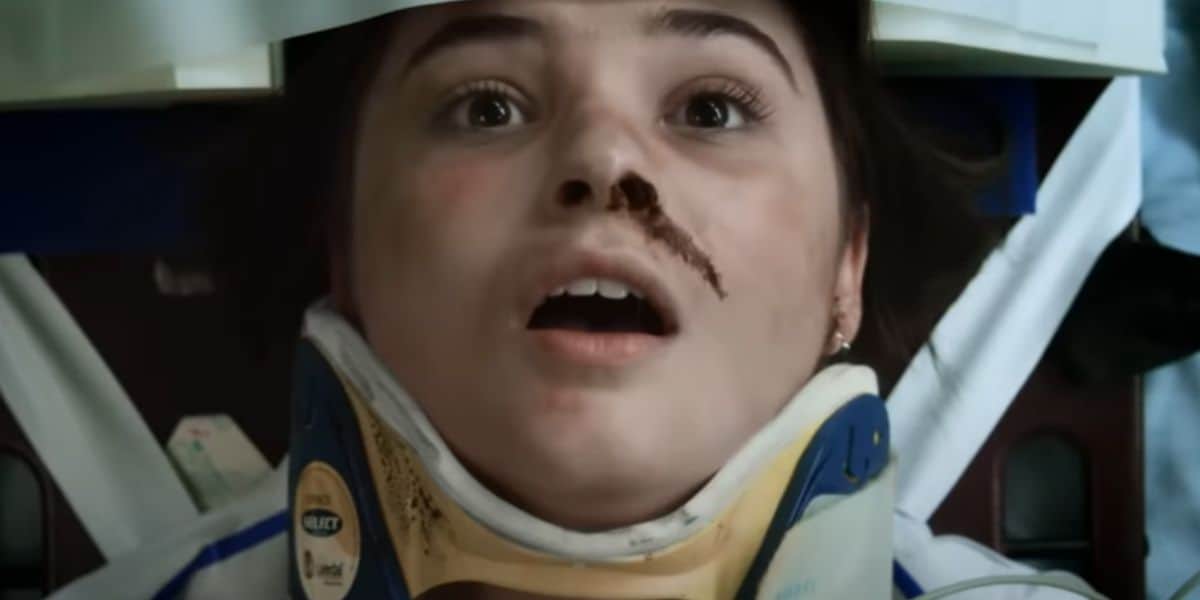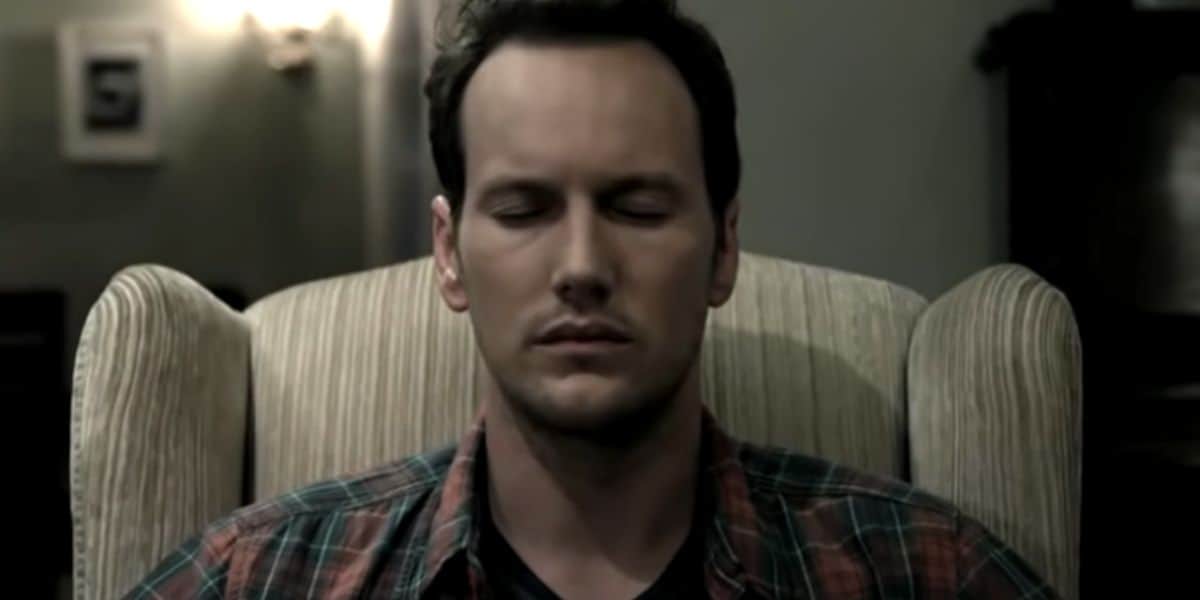Yes, it’s only June, but somehow Halloween will be here before we know it. So, it’s time to get our horror rankings underway (we’ve a fair few lined up). And with five films now under its belt, let’s start with the Insidious franchise. You’ll never look at closet doors the same way again. Or tulips, for that matter.
5. The Last Key

Insidious: The Last Key (2018) is widely considered to one of the weakest entries in the Insidious franchise. The fourth installment shifts the focus onto psychic medium Elise Rainier (Lin Shaye) and her two accompanying paranormal investigators, Specs (Leigh Whannell) and Tucker (Angus Sampson), as we delve into her family history.
There’s plenty of compelling stuff here – the film opens with a shocking sequence revealing the fate of Elise’s mother, and there’s an unexpected twist involving a hostage in her old family home. But, unfortunately, while the three leads do their best to hold the plot together, The Last Key isn’t anywhere near as frightening or creative as its predecessors.
The Further appears to be under-realized, with the unsettling ’40s/’50s aesthetics of the original films’ depiction criminally abandoned for a somewhat generic setting, while the film’s main villain, the “Key Demon,” doesn’t hold a candle to the Lipstick-Faced Demon.
That’s not to say The Last Key is a bad film or a bad prequel, and Elise’s backstory certainly makes her even more interesting and likable, but the lack of atmosphere and genuine scares is hard to overlook.
Related: All the ‘A Nightmare on Elm Street’ Movies Ranked From Worst to Best
4. Insidious: Chapter 3

Insidious: Chapter 3 (2015) is the first film to abandon the Lambert family storyline for some fresh blood. This time, teenager Quinn Brenner (Stefanie Scott) faces the dark forces of The Further when she becomes bedbound after being struck by a car.
The small apartment she shares with her recently-widowed father, Sean Brenner (Dermot Mulroney), and younger brother, Alex Brenner (Tate Berney), might not seem like the appropriate setting for supernatural horror, but it’s the apartment upstairs she should be concerned about.
After her brush with death, Quinn becomes the target of an evil entity from The Further known as “The Man Who Can’t Breathe” (Michael Reid MacKay), an old man fitted with an oxygen mask, which only makes him more terrifying.
During the first half of Chapter 3, you might find yourself wondering why the filmmakers chose to have a teenage lead in an Insidious film after audiences have followed an entire family for the previous two entries, but Quinn quickly makes the prequel her own, and the film draws a deep enough line in the sand to separate itself from its predecessors, even with the return of Elise, Specs, and Tucker.
There are some genuine scares here, but the poignant third act and Quinn’s grief for her mother help make this more memorable than it should have been.
Related: Every ‘Child’s Play’ Movie Ranked From Worst to Best
3. The Red Door

The sixth installment in the Insidious franchise sees the return of the Lamberts, Josh (Patrick Wilson), Renai (Rose Byrne), Foster (Andrew Astor), and Dalton (Ty Simpkins). Nine years after the events of the first two films in the series, Insidious (2010) and Insidious: Chapter 2 (2013), we find the family fractured and divided.
At the end of the second film, Elise uses hypnosis to help Josh and Dalton to forget The Further and their ability to “astral project” into the world of the dead while in their sleep. But, as we learn in the latest film, Josh has, as a result, became a distant father, while Dalton, now a college student, is convinced his family has been keeping something from him.
But as they slowly begin to remember, spirits and demons from The Further start to take notice, and before long, Josh and Dalton, who are miles apart, begin to experience a new terror.
The Red Door might have done well at the box office, but it didn’t impress critics. However, the film serves as a solid direct sequel to the first two films, despite many feeling that a follow-up wasn’t necessary, with Chapter 2 having offered plenty of closure at the time.
While it may not have been entirely necessary to revisit the Lamberts, in hindsight, it’s naïve to think all was well for the family after their experience with the dead – even if we all wanted it to be. And though it pales in comparison to the original film, it’s still one of the most unnerving, and perhaps most interesting, installments in the Insidious series.
Related: Every ‘Halloween’ Movie Ranked Worst to Best
2. Insidious: Chapter 2

Insidious: Chapter 2 picks up almost immediately where the first film ends, where Elise is killed by “The Bride in Black,” an “insidious” spirit from The Further who has possessed Josh’s body. You could make the case that even a single sequel wasn’t necessary, even with a nail-biting cliff-hanger like this one, however, after the 2010 film grossed $100.1 billion at the box office against its $1.5 million budget, a sequel was inevitable.
Fortunately, Chapter 2 serves as a fitting extension to its predecessor. In fact, it might just be the last “true” Insidious sequel. Beyond this installment, the franchise appears to forget what made The Further so terrifying in the first place: those familiar yet haunting aesthetics of bygone eras like the ’40s and ’50s, which are given a surreal, nightmarish and almost theater production-like quality.
Chapter 2 also has some brilliant twists and turns, and even introduces time travel into the series, as the events suddenly overlap with the first film. It may not hold a candle (or a lantern) to the original where scares are concerned, but the 2013 sequel is as good as horror sequels get.
Related: Every ‘Scream’ Movie Ranked From Worst to Best
1. Insidious

Did you expect any of the other Insidious movies to reach the top spot? Claustrophobic settings, hair-raising visuals, and frantic violins — Insidious has yet to be outdone by any of its sequels. For all intents and purposes, Insidious is a haunted house movie, but as we eventually learn from Elise, “It’s not your house that’s haunted — it’s your son.”
The idea that individuals with the ability to astral project can “travel” so far while they dream that they may wind up in a place where the dead wander is absolutely genius.
Then there’s The Further itself, which truly encapsulates that surrealism we experience in our darkest dreams: one minute, a featureless dark void where the only light might be a dusty old lantern in our trembling hand; the next, all-too-familiar settings that would offer comfort in the real world, but here see ethereal figures slip in and out of the shadows.
But the most frightening parts about Insidious are the scenes outside The Further. The cinematography is intimate, claustrophobic, and sometimes feels deliberately like found footage. Insidious‘ $1.5 million budget turns out to be its secret weapon, as it gives the film an indie feeling that’s criminally lacking in every single sequel, even its direct follow-up, Chapter 2.
Insidious is a deeply atmospheric horror that relies far more on atmosphere than disposable jump scares — something its many sequels are guilty of.
And then, of course, there’s that spine-tingling song: “Tiptoe Through the Tulips.” Yikes.
How would you rank the Insidious movies? Let Inside the Magic know in the comments down below!
